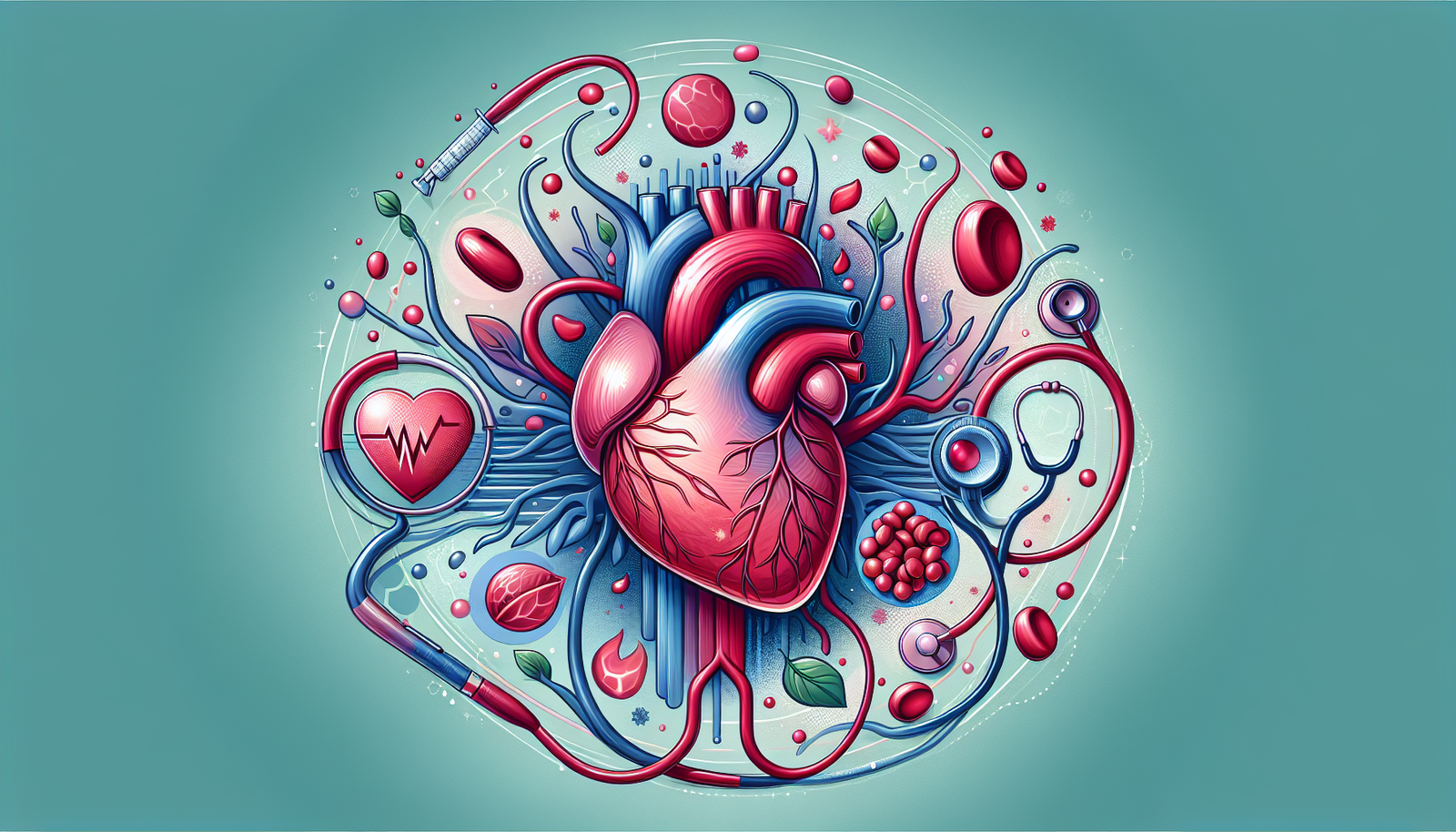Understanding Cellular Respiration: From Glucose to Energy
Understanding Cellular Respiration: From Glucose to Energy
Cellular respiration is a fundamental biochemical process that transforms glucose and other organic molecules into adenosine triphosphate (ATP), the energy currency of cells. This process is essential for the survival of nearly all organisms, as it provides the necessary energy for cellular functions, growth, and maintenance. To fully appreciate the intricacies of cellular respiration, we’ll explore its stages, pathways, and significance in various organisms.
The Importance of Cellular Respiration
Every living cell requires energy to perform various functions, from muscle contraction to nerve impulse transmission. Cellular respiration is the mechanism through which energy is extracted from nutrients, particularly glucose. The general chemical equation for cellular respiration can be summarized as:
[ text{C}{6}text{H}{12}text{O}{6} + 6 text{O}{2} rightarrow 6 text{CO}{2} + 6 text{H}{2}text{O} + text{ATP} ]
In essence, glucose reacts with oxygen to produce carbon dioxide, water, and energy. This process occurs through several phases, primarily glycolysis, the Krebs cycle, and oxidative phosphorylation.
Glycolysis: The First Step
Glycolysis, which occurs in the cytoplasm of cells, is the first stage of cellular respiration and does not require oxygen, making it an anaerobic process. It begins with one molecule of glucose (a six-carbon compound) and results in the production of two molecules of pyruvate (a three-carbon compound), along with a net gain of two ATP molecules and two NADH molecules (nicotinamide adenine dinucleotide in its reduced form). Glycolysis can be divided into two phases:
1. Energy Investment Phase
In the initial investment phase, two ATP molecules are consumed to convert glucose into fructose 1,6-bisphosphate. This step is crucial because it prepares the glucose molecule for subsequent cleavage.
2. Energy Payoff Phase
During the energy payoff phase, the fructose 1,6-bisphosphate is split into two three-carbon molecules. Each of these is converted into pyruvate, which produces four ATP and two NADH in total. The net gain after considering the two ATP consumed in the initial phase is two ATP molecules.
The overall reaction of glycolysis can be represented as follows:
[ text{Glucose} + 2 text{NAD}^+ + 2 text{ADP} + 2 text{P}{i} rightarrow 2 text{Pyruvate} + 2 text{NADH} + 2 text{ATP} + 2 text{H}{2}text{O} ]
Transition Reaction: From Glycolysis to Krebs Cycle
Upon entering the mitochondria, pyruvate undergoes a transition reaction, known as pyruvate oxidation. This step links glycolysis to the Krebs cycle. Each pyruvate molecule loses one carbon atom (released as carbon dioxide), reducing NAD+ to NADH, forming acetyl-CoA, a two-carbon molecule that enters the Krebs cycle.
The reaction can be summarized as follows:
[ text{Pyruvate} + text{Coenzyme A} + text{NAD}^+ rightarrow text{Acetyl-CoA} + text{NADH} + text{CO}_{2} ]
The Krebs Cycle: Extracting More Energy
The Krebs cycle, also known as the citric acid cycle or tricarboxylic acid (TCA) cycle, occurs in the mitochondrial matrix. It involves a series of enzymatic reactions that further oxidize acetyl-CoA into carbon dioxide while generating ATP, NADH, and FADH2 (flavin adenine dinucleotide in its reduced form).
Each acetyl-CoA enters the cycle and combines with a four-carbon molecule, oxaloacetate, to form citric acid—a six-carbon compound. Through a series of transformations, citric acid is decarboxylated, ultimately regenerating oxaloacetate. Key steps include:
Key Products of the Krebs Cycle
For each turn of the Krebs cycle (per acetyl-CoA), the following products are generated:
- 3 NADH
- 1 FADH2
- 1 ATP (or GTP)
- 2 CO2 (as waste)
Since each glucose molecule yields two acetyl-CoA molecules, each glucose molecule effectively results in two turns of the Krebs cycle, doubling the outputs mentioned above.
The overall reaction can be summarized as:
[ 2 text{Acetyl-CoA} + 6 text{NAD}^+ + 2 text{FAD} + 2 text{ADP} + 2 text{P}{i} rightarrow 4 text{CO}{2} + 6 text{NADH} + 2 text{FADH2} + 2 text{ATP} ]
Oxidative Phosphorylation: The Final Stage
The last stage of cellular respiration, oxidative phosphorylation, takes place on the inner mitochondrial membrane and consists of two main components: the electron transport chain (ETC) and chemiosmosis.
Electron Transport Chain
NADH and FADH2 produced in previous stages donate electrons to the electron transport chain, a series of protein complexes embedded in the inner mitochondrial membrane:
- Complex I (NADH dehydrogenase) reduces coenzyme Q by passing electrons from NADH.
- Complex II (Succinate dehydrogenase) accepts electrons from FADH2.
- Coenzyme Q transfers electrons to Complex III (cytochrome bc1 complex), where they move to cytochrome c.
- Finally, electrons reach Complex IV (cytochrome c oxidase), which reduces oxygen (the final electron acceptor) to form water.
As electrons traverse these complexes, energy is released and used to pump protons (H+) from the mitochondrial matrix into the intermembrane space, creating a proton gradient.
Chemiosmosis
The built-up proton gradient generates potential energy, known as the proton motive force. Protons flow back into the matrix through ATP synthase, a protein complex that utilizes this flow to convert ADP and inorganic phosphate (Pi) into ATP. This process, known as chemiosmosis, is the main producer of ATP in aerobic respiration.
Overall, through oxidative phosphorylation, approximately 28 to 34 ATP molecules are generated from one glucose molecule.
Yield of Cellular Respiration
When calculating the total yield of ATP from one glucose molecule, the following estimates can be made:
- Glycolysis: 2 ATP + 2 NADH (which can yield up to 6 ATP)
- Krebs Cycle: 2 ATP + 6 NADH (which can yield up to 18 ATP) + 2 FADH2 (which can yield up to 4 ATP)
- Total: 36 to 38 ATP
The exact number of ATP produced can vary based on factors like the shuttle systems used to transport electrons into the mitochondria.
Anaerobic Respiration
In situations where oxygen is scarce or absent, some cells can undergo anaerobic respiration, a process that allows them to generate ATP without oxygen. This process differs significantly from aerobic respiration and results in different end products, such as:
-
Lactic acid fermentation: In animal cells, lactic acid is produced from pyruvate, allowing glycolysis to continue producing ATP.
[ text{Pyruvate} + text{NADH} rightarrow text{Lactic acid} + text{NAD}^+ ]
-
Alcoholic fermentation: In yeast, ethanol and carbon dioxide are produced from pyruvate.
[ text{Pyruvate} rightarrow text{Ethanol} + text{CO}_{2} ]
While anaerobic respiration is less efficient in ATP production compared to aerobic respiration, it enables some organisms to survive in environments devoid of oxygen.
The Role of Cellular Respiration in Metabolism
Cellular respiration plays a pivotal role in metabolic pathways, functioning not merely in energy production but also in biosynthetic processes. The metabolites generated during glycolysis and the Krebs cycle serve as precursors for the synthesis of amino acids, fatty acids, and nucleotides.
Moreover, energy derived from cellular respiration can influence various physiological processes, including muscle contraction, thermoregulation, and signal transduction pathways.
Special Considerations in Cellular Respiration
-
Role of Mitochondria: Mitochondria, often referred to as the powerhouses of the cell, are equipped with their own DNA and can replicate independently. They are the sight of cellular respiration, underscoring their importance in energy metabolism.
-
Impact of Exercise: During intense physical activity, anaerobic respiration kicks in when oxygen supply is insufficient, allowing for rapid ATP production. This is why lactic acid buildup leads to muscle fatigue.
-
Diseases Related to Cellular Respiration: Impairments in cellular respiration have been associated with various diseases, including metabolic disorders and mitochondrial diseases. Understanding these pathways allows scientists to develop targeted therapies.
-
Environmental Factors: Temperature, oxygen levels, and substrate availability can drastically affect cellular respiration rates. For instance, warmer temperatures can enhance respiration rates in ectothermic organisms.
- Evolution of Respiration: The evolution of aerobic respiration allowed organisms to exploit new ecological niches. The availability of oxygen in the Earth’s atmosphere facilitated increased energy production, leading to more complex forms of life.
Conclusion
Cellular respiration is a complex, multi-staged process fundamental for life on Earth. Through glycolysis, the Krebs cycle, and oxidative phosphorylation, organisms convert glucose into usable energy in the form of ATP. While the process is intricate, its principles are essential for sustaining life’s biochemical reactions and supporting metabolic health. Understanding these mechanisms paves the way for advancements in medical and environmental sciences, emphasizing the importance of cellular respiration in biology.








